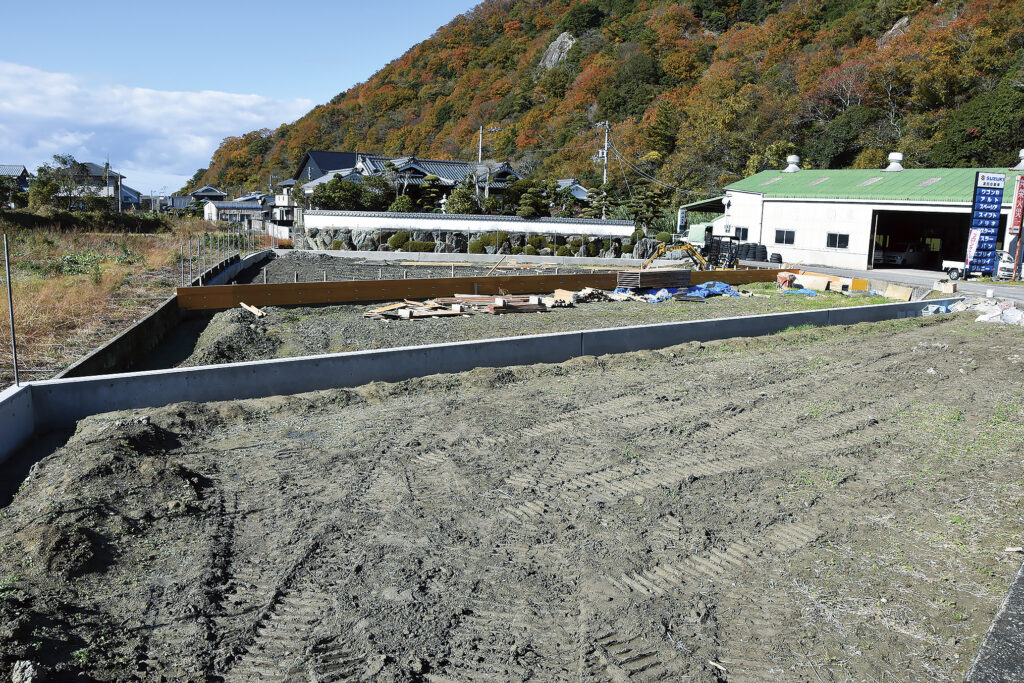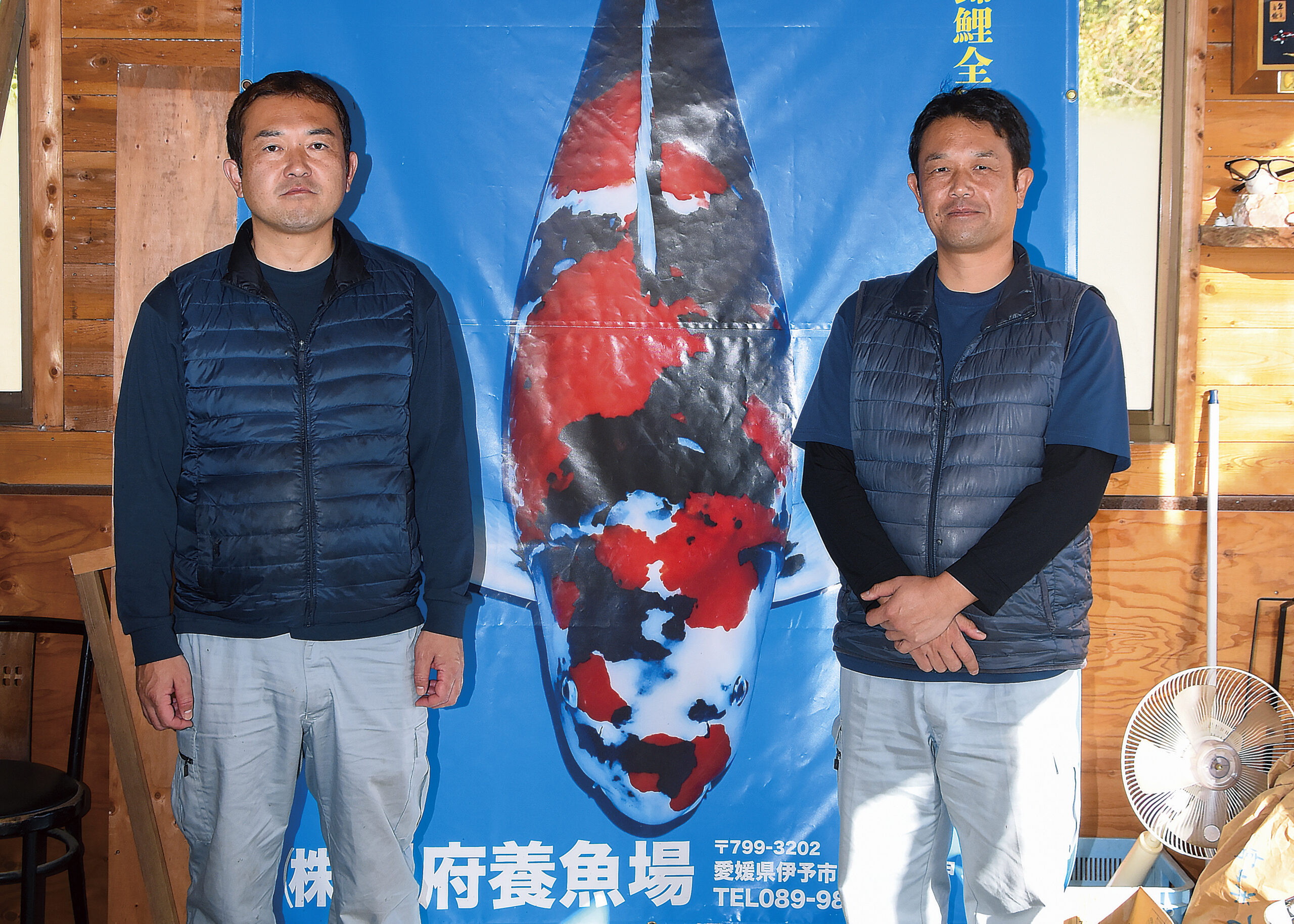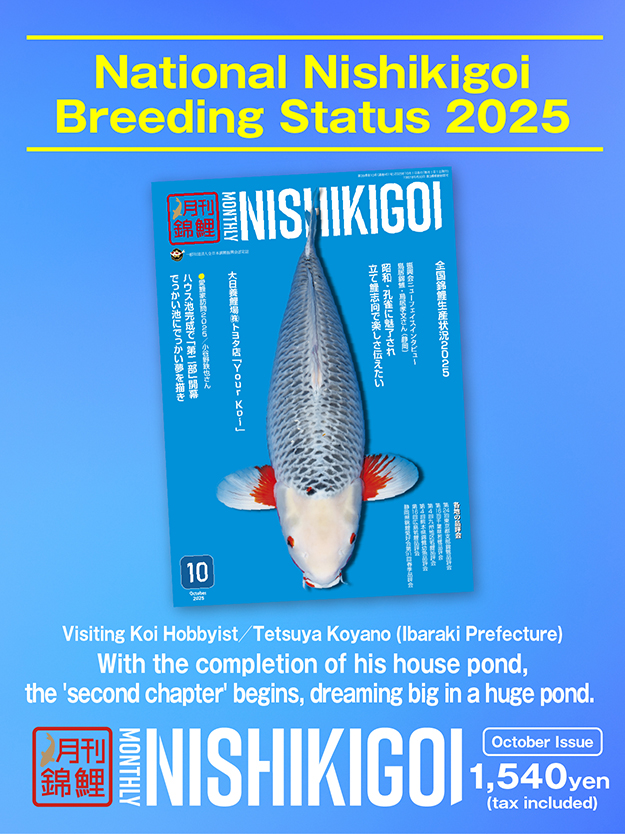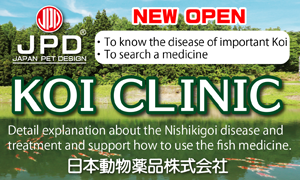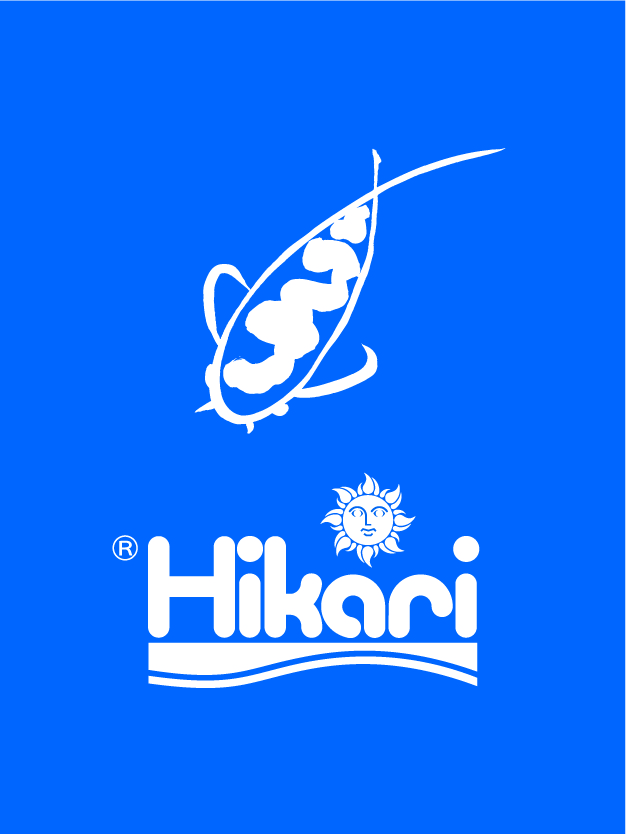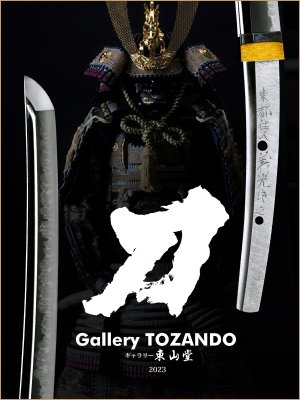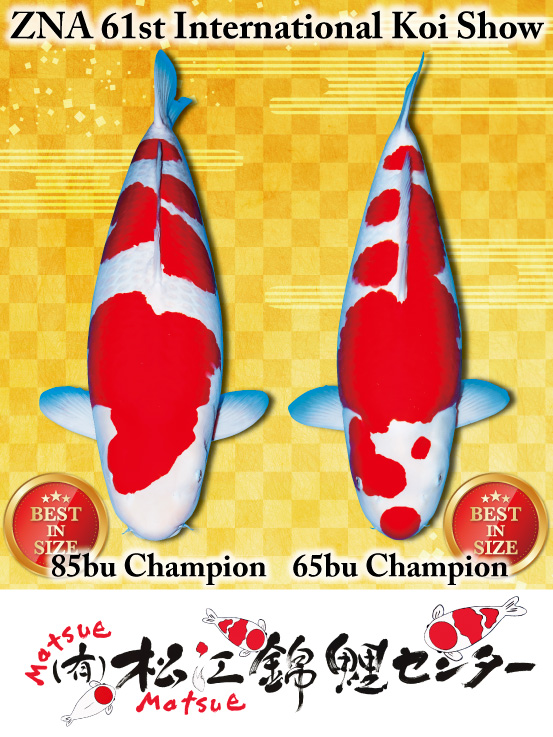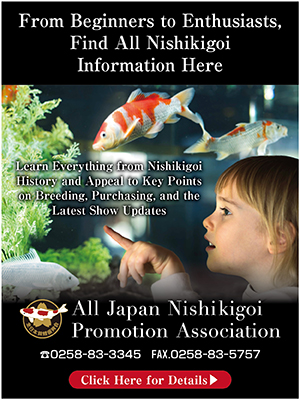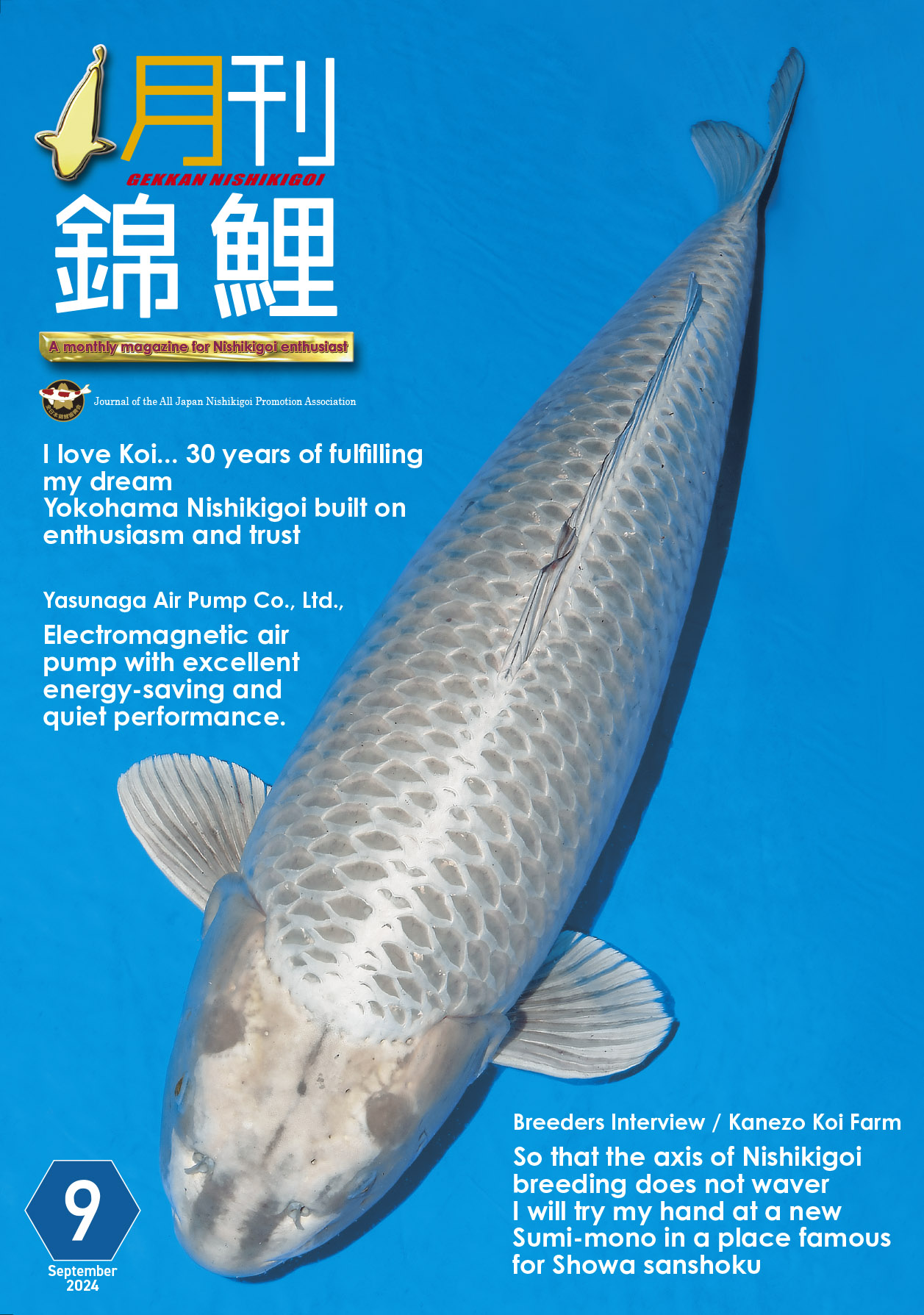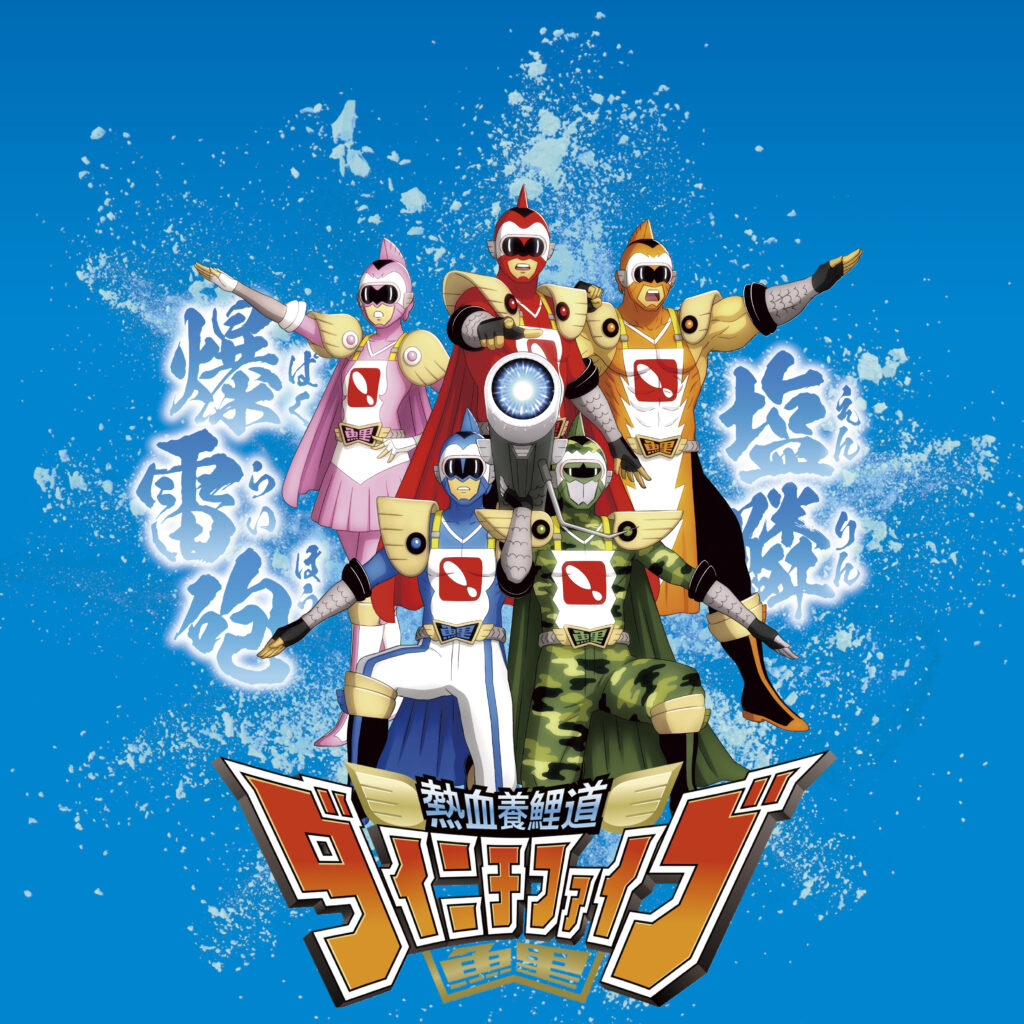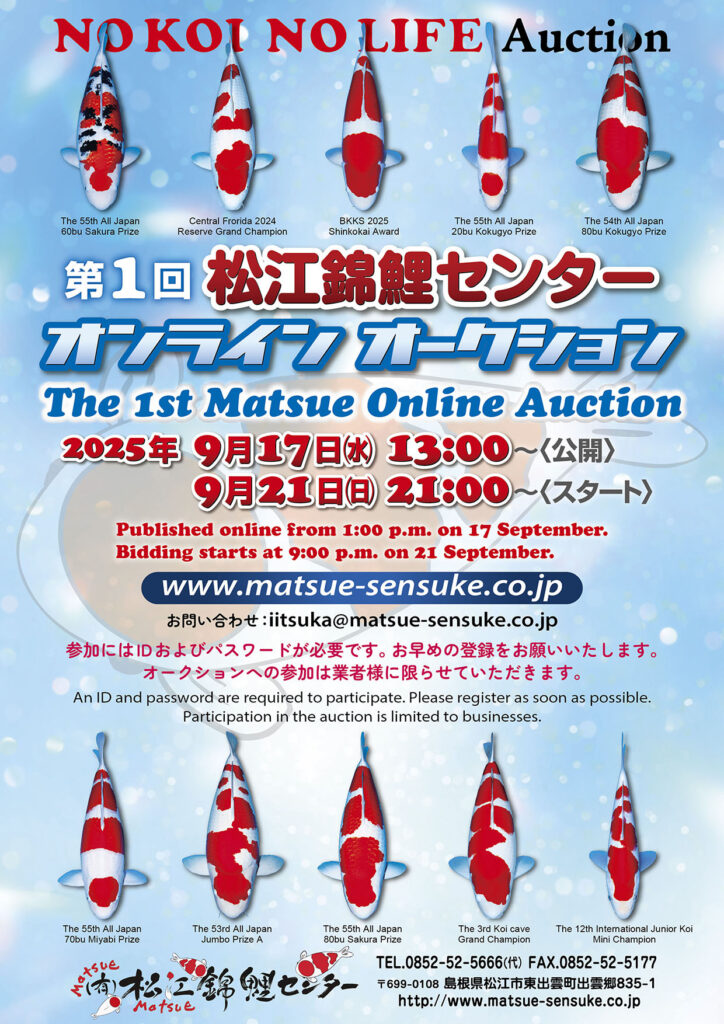The goal is to compete for the All Japan Grand Champion title.
Putting effort into auctions.
―What are your future goals or aspirations?
Takaharu: I want to breed homebred koi that grow over one meter long and have the quality to be nominated for the All Japan Grand Champion, standing alongside those from top breeders like Sakai Fish Farm. I believe our strength lies in growing koi to a large size in the mud ponds. It would be ideal if we could grow koi big enough to perform well in competitions and make it to the top ranks.
―Have you had any fish that made you feel like you’re getting closer to that goal?
Takaharu: The Showa that won the grand champion in the 12th Shikoku district koi show(photo④) grew over 90 cm.
―What type of lineage is this?
Takaharu: The parents are from Migita Koi Farm. Its name is “Kinpozan.” This one went to Sakai Fish Farm and became a parent. It caught Kentaro’s eye, and I was thrilled when he said, “This one is excellent.”
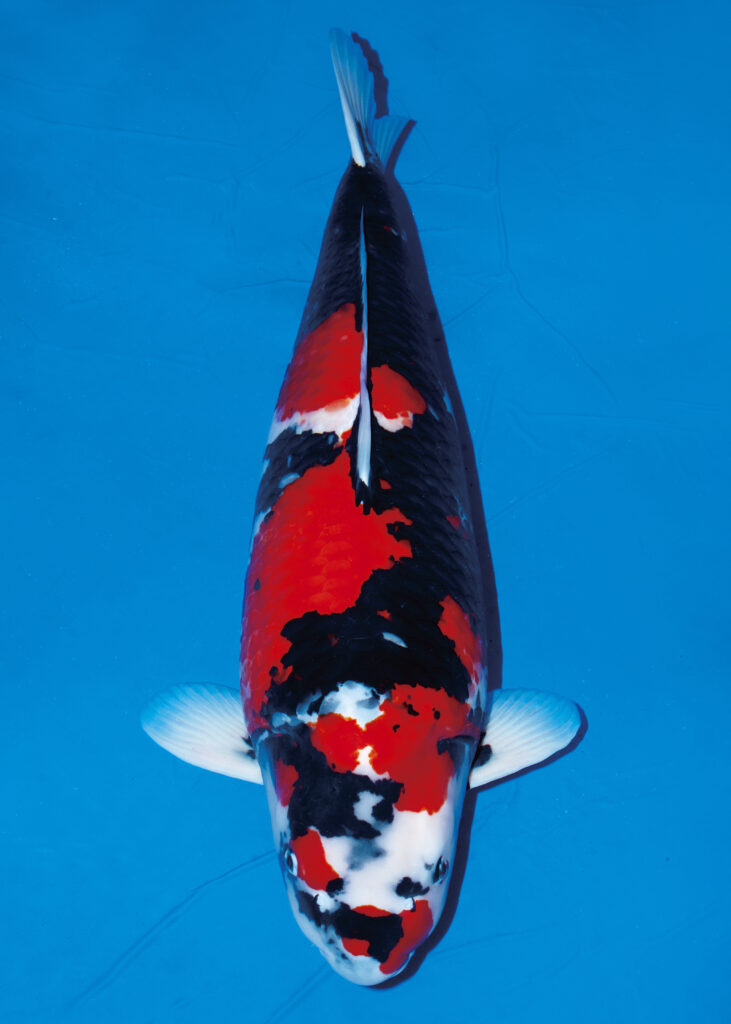
―Do you feel like there’s a koi that could follow in its footsteps?
Takaharu: I think the ones we entered in the WNC auction are reaching a pretty good level. Suppose we can consistently produce koi like that every year.
―What kind of koi did you put up for auction?
Takaharu: Two Taisho Sanshoku, two Karashi, and one Silver Fox.
―Did they receive good feedback?
Takaharu: Yes, fortunately, thanks to Kentaro’s kindness, we’re now able to list koi in Sakai Fish Farm’s auctions (※)as well as the WNC auction. A small operation like ours can’t host our own auction, so we’re very grateful for the opportunity to have our koi seen and evaluated by a wide range of people through those platforms.
(※)The Botan Grand Prize koi was bred by Sakai Fish Farm. Beppu Fish Farm purchased it as a tosai and raised it in their mud pond. It was later listed in an auction held by Sakai Fish Farm, and Thai Nippon Fish Farm purchased it.
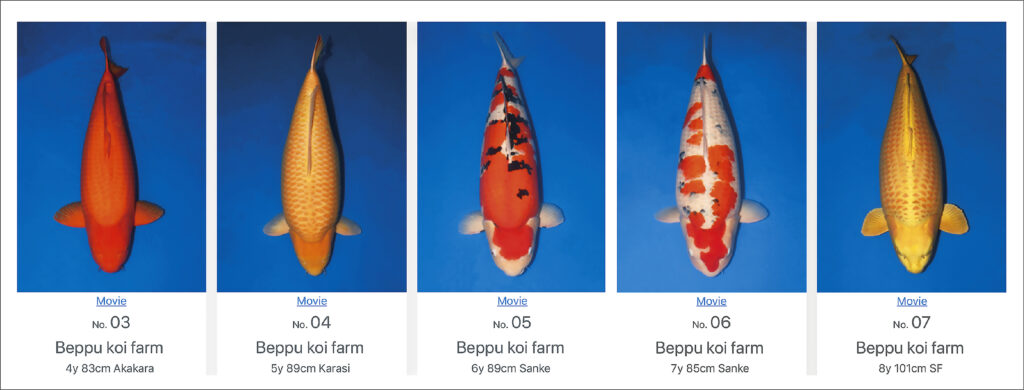
―Unlike Niigata or Hiroshima, where there are many koi breeders, your location in Shikoku seems disadvantaged. What are your thoughts on that?
Takaharu: If someone drives from Hiroshima to visit us, it’s a three-hour journey. So, if they come to see the koi and then head back, it takes up an entire day. From the customer’s point of view, if they’re making the trip, they want to purchase high-quality koi that will be profitable. From our side, we aim to raise koi that also live up to those expectations.
―To achieve that, increasing your reputation through auctions is essential, isn’t it?
Takaharu: Yes. When we get recognised, and the prices reflect that, it gives us a sense of achievement. Since we have these opportunities and platforms, we’d like to keep participating in them going forward.
Takaharu: Since our seniors established the WNC, we want to follow their lead and keep up as much as possible.
―Since it will be held every year, will that become one of your goals?
Takaharu: Yes, that’s right. We want to showcase the best koi of the year, have everyone see them, and get their feedback.
―I’ve heard that you’ve secured a place to create new concrete ponds in addition to the well-established mud ponds. I’m looking forward to seeing the future development of Beppu Fish Farm’s koi, and I’m excited about your leap from Shikoku to nationwide recognition.

